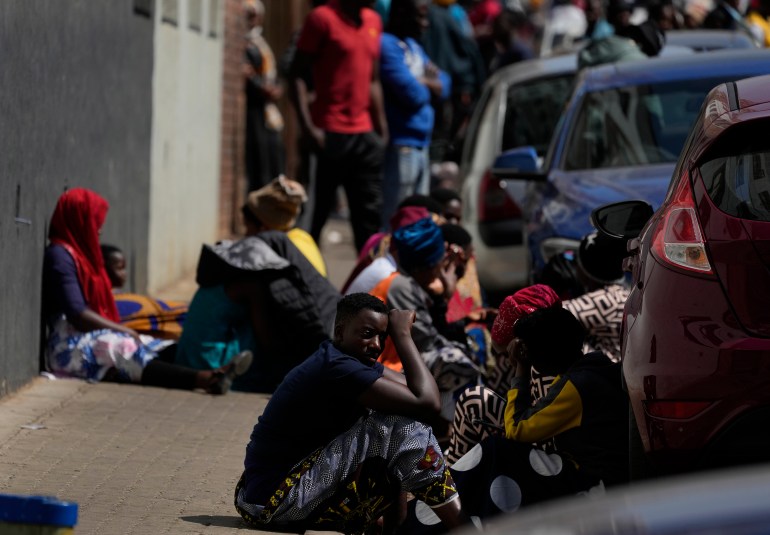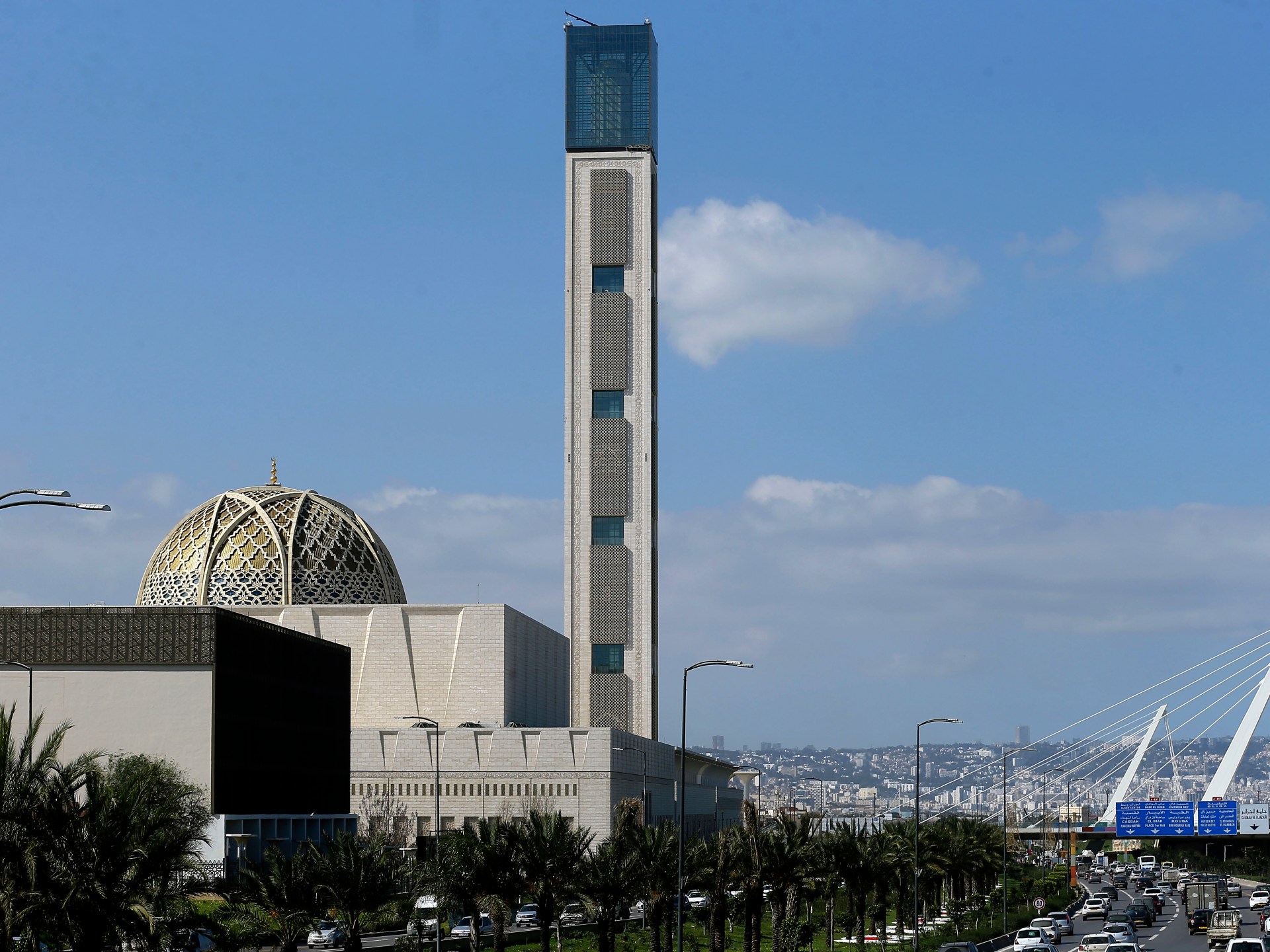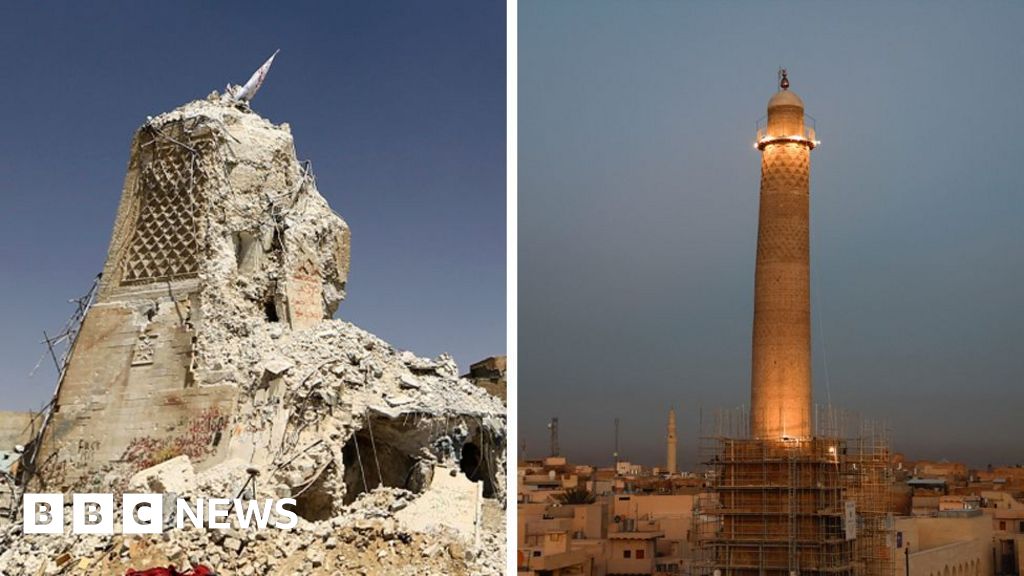A year after Johannesburg building fire, survivors feel abandoned by city | Poverty and Development News
Johannesburg, South Africa – Sibongile Majavava sits outside her small tent shack at the Wembley stadium homeless shelter on the eastern outskirts of Johannesburg, her third temporary home since a deadly fire tore through the building she was living in a year ago.
The 34-year-old South African, her Tanzanian partner, Muhdi, 36 and their toddler have been hoping to get back on their feet since the August 2023 blaze in the dilapidated Usindiso building in the inner city killed 76 people and left hundreds homeless.
But a year later, surrounded by tents and makeshift dwellings in the former sports stadium-turned-shelter, the couple feel hopeless and abandoned by those they thought would help them.
“Life here is very hard,” said Majavava, who has no income and worries about keeping track of her three-year-old because of crime at the shelter. She needs to buy the child shoes, she said, because of used drug needles and other dangerous rubbish lying on the ground.
In 2018, the government installed container homes, water, electricity and standalone ablution units at Wembley, which also houses survivors of the 2017 Cape York building fire and people the city evicted from a derelict building called Fattis Mansions.
Building fires have become common in downtown Johannesburg where hundreds of what city officials call “hijacked” buildings have been taken over by criminal cartels. These gangs partition off rooms and rent them out illegally to poor and desperate people – while offering no services like functioning water, electricity or sewage, which creates unsafe living conditions.
Usindiso was in a similar state by the time the deadly fire happened last August, with a commission of inquiry into the blaze finding that it housed 200 shacks “partitioned with highly flammable material” (PDF).
The commission’s report, released in May, found the City of Johannesburg liable for neglecting Usindiso as well as 200 other buildings in a similar state of dilapidation in Johannesburg.
The city has ‘failed’
“The city has failed to fulfil its constitutional obligation to provide decent housing,” said Siyabonga Mahlangu, a representative for the Inner City Federation (ICF), an advocacy group fighting evictions in Johannesburg.
While the conditions in hijacked buildings are dire, housing activists like Mahlangu say the city’s solutions – like the Wembley shelter – are not much better.
Six years since the first residents were moved there, in what was supposed to be a temporary arrangement, people feel forgotten.
“The conditions at Wembley are not good at all,” Mahlangu said, likening the tents to living on the street.
Wembley itself is dusty with heaps of rubbish beside the makeshift homes. Young men, most unemployed, drink alcohol in the middle of the day while playing loud music as several children run around. A previous count by the city put the number of people living there at about 500.
Mahlangu said since the first evictees from hijacked inner-city buildings were relocated to Wembley in 2017, the shelter has not been maintained and residents are terrorised by crime.
Yet, “the city acts like they are doing them a favour” by letting them stay there, he told Al Jazeera.
Edward Molopi, a senior advocate at legal rights group the Socio-Economic Rights Institute (SERI), which assists people facing eviction, said the crisis is part of a broader conversation about the city’s responsibility to provide alternative housing for people it displaces.
“According to law, if eviction is going to end up in homelessness, the city is supposed to provide alternative accommodation,” he told Al Jazeera, referencing an older ruling by the Constitutional Court.
Although the municipality provided the relocation site, it “has failed to maintain and upkeep the premises”, he said.
Responding to Al Jazeera’s request for comment, Sibonelo Mtshali, the spokesperson for the City of Johannesburg’s human settlements department, said a member of the mayoral office was “still reviewing the situation at Usindiso building and homeless shelters since he recently took office this August”.

Multiple moves
Usindiso had a long and tragic history even before the 2023 blaze. The five-storey office block initially housed the city’s Pass Office under apartheid, where Black people would apply for documents allowing them to work in the segregated, white-run city.
After apartheid, it was converted to a shelter for abused women and children. But years later, when the nonprofit based there ran out of funding, it was hijacked by a cartel which let it fall into disrepair until it caught fire last August.
The official death toll announced during the inquiry found that the blaze killed 20 South Africans, 23 Malawians, six Zimbabweans, four Mozambicans, and four Tanzanians; 19 others remain unidentified.
After the disaster, officials identified 99 South African survivors and 78 undocumented foreign nationals. Many of those living in hijacked buildings in the inner city are poor migrants who move to Johannesburg to find work and a better life.
Just after the fire, some foreigners who survived did not make themselves known to authorities for fear of being arrested, and many are now living in the streets, under bridges, or in other unsafe abandoned buildings, according to local media reports.
Majavava and her family joined the identified survivors the city first relocated to Hofland Park Recreation Centre in a suburb east of Johannesburg.
But she said three months later, the foreign nationals who were placed at Hofland were arrested for deportation, and “then us South Africans were put at Denver [informal settlement]” in an industrial area outside the city.
Majavasa said the Denver settlement – which already housed survivors from the September 2023 Delvers Street fire and evictees from a hijacked building called Remington Court – was far from services and she had to cross train tracks to get to the shops.
Residents relocated there had also previously complained about safety, flooding and lack of electricity, which ICF representative Mahlangu also noted during a visit to the building. “People are living there because they are desperate,” he said.
Majavava said that in the absence of electricity, they “had to use a paraffin stove” to cook and that they had issues with hot water.
Officials recently said, “the City has not been able to electrify the old Denver settlement due to congestion”.

Similar to Wembley, the Denver shelter has deteriorated over the years, while taking in survivors from Johannesburg’s many building disasters.
Some longtime residents made things difficult for newer residents, Majavava said, adding that eventually after a group of men took over newer shacks in the settlement, she and her family were forcibly removed and sent to Wembley.
A shell of a building
On August 31, 2023, smoke billowed from the Usindiso building as firefighters tackled the blaze.
Outside, distraught survivors and families of the deceased waited to hear from officials, while on the pavement nearby, the bodies of the dead lay silently covered in sheets of aluminium foil.
A year later, the street the building is on is quiet and clean. Usindiso has been closed off with a green fence, while the building is mostly a shell – hollowed out with no windows, just empty frames.
Although no one officially lives there, some homeless people have opened part of the fence leading to the entrance to sneak inside.
Former resident Thabo Mlangeni, 45, still sleeps there, too.
Originally from Natalspruit, some 30km (18 miles) from the city, Mlangeni spent 16 years in prison for murder and then ended up on the streets, using crystal meth.
Now he does odd jobs in Johannesburg during the day; and with no place to go at night, he returns to the empty Usindiso building.
Mlangeni said he was seated outside on the pavement smoking with friends after midnight that night last August when he heard people screaming.
“I saw two women jumping out of the windows. One was holding a curtain before she fell,” he said, remembering how some tried jumping from the burning building after they could not reach the entrance.
After the fire, Mlangeni refused to go to a shelter, preferring to find his own accommodation.

ICF’s Mahlangu said rather than solve the issue of rampant fires in Johannesburg’s buildings, the city is “promoting these disasters” by disconnecting water and services.
“Some of the occupied buildings are not for residential use, to begin with,” said SERI’s Molopi, adding that “the people who move in subdivide the space with boards to create rooms”.
Those materials further increase the risk of fire, he added.
‘Distressing living conditions’
Usindiso is believed to have housed about 400 people when it went up in flames.
Residents reported a diverse group of people living there, as well as several people and extended families housed in a single shack.
The commission of inquiry into the blaze found that a “lack of ventilation” combined with “combustible material” used to partition the building gravely increased the spread of the fire.
During the six-month inquiry, a 32-year-old former resident, Sithembiso Mdlalose, confessed to starting the fire; but he later retracted his statement.
While “being high on the methamphetamine”, Mdlalose murdered a resident and doused the body with petrol in an attempt to hide the crime, the inquiry report stated.
Currently in custody, Mdlalose has been charged with arson and 76 counts of murder at the Johannesburg Central Magistrate’s Court.
Meanwhile, witness testimony at the inquiry implicated a local ward councillor to have colluded with building hijackers in installing the 200 shacks inside Usindiso.
The inquiry also held the city liable for the “distressing living conditions” at the building.
“The consequences of the fire would have been mitigated significantly had the city complied with its legal obligations as owner and municipality” the report added.
After accepting 340 written statements and 15 witness testimonies, the inquiry completed Phase 1 of the investigation in April.

The commission’s recommendations, which include a plaque to honour the deceased, provision of identity documentation, compensation, psychosocial support, and officials to be held accountable, are yet to be implemented.
“We are not at a point where we can enforce the recommendations,” said Mahlangu, the ICF representative.
He added that Phase 2 of the report, to investigate the prevalence of hijacked buildings in the city, has commenced and the commission has done site inspections of more than 50 buildings in the surrounding area.
“The commission is not being fair, they say some of these buildings should be demolished whereas we say some of the challenges like leaking pipes and lack of services can be fixed,” said Mahlangu, who remains concerned about where residents will go if the buildings are destroyed.
Majavava, meanwhile, is being held up by red tape. She said although the Department of Home Affairs had set up a temporary mobile facility at the Hofland shelter to help survivors replace the documents they lost in the fire, she is still without her South African ID.
Her toddler often gets sick at the Wembley shelter but when she takes her to the nearby clinic, they always ask her for ID, Majavava added.
At the same time, her partner Muhdi says he needs money to travel to the Tanzanian embassy in Pretoria, about 60km (37 miles) away, to explain his predicament to them and get new papers.
“If I can get my ID, then I can take it from there,” Majavava told Al Jazeera, with hopes their predicament will improve.
Check out our Latest News and Follow us at Facebook
Original Source






